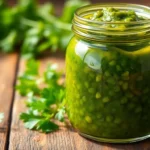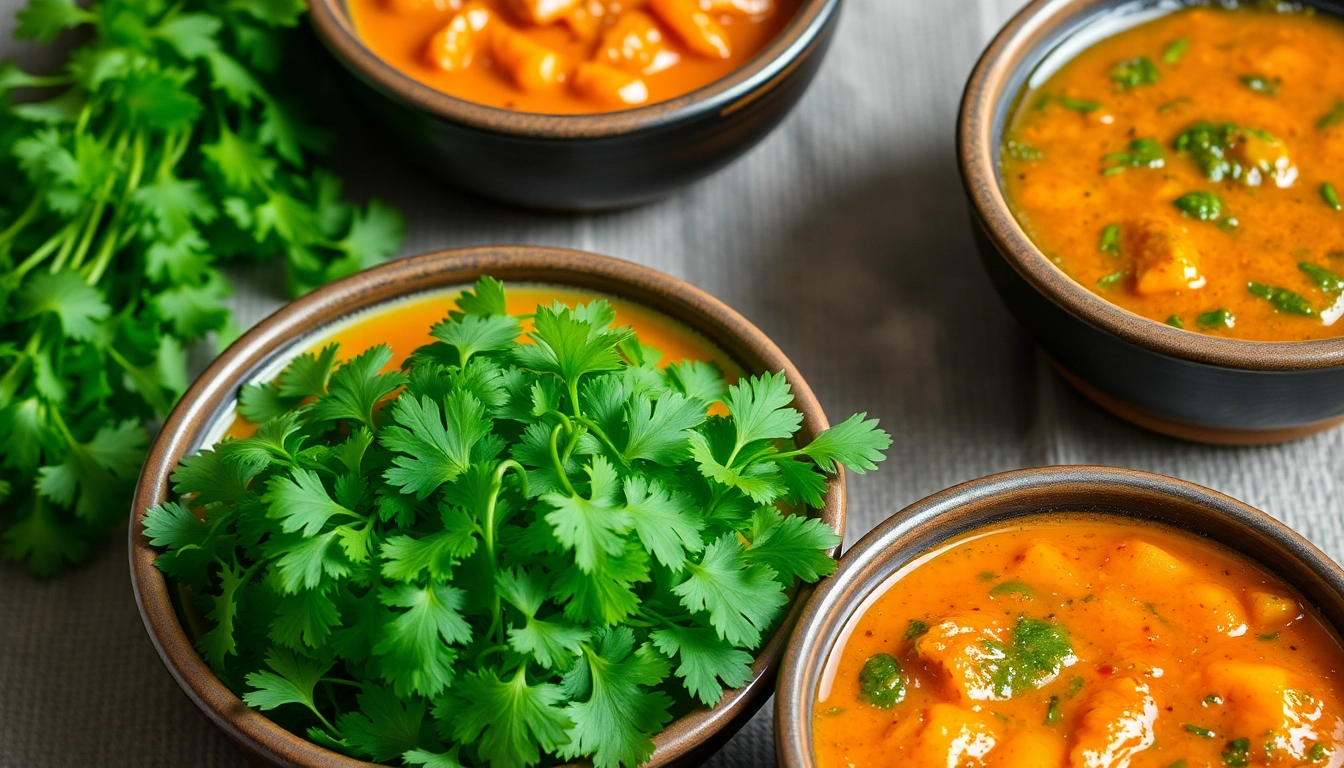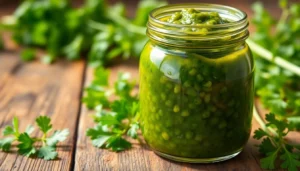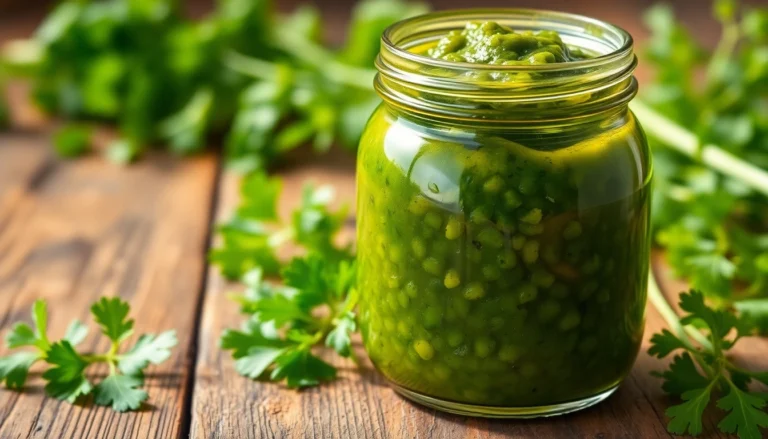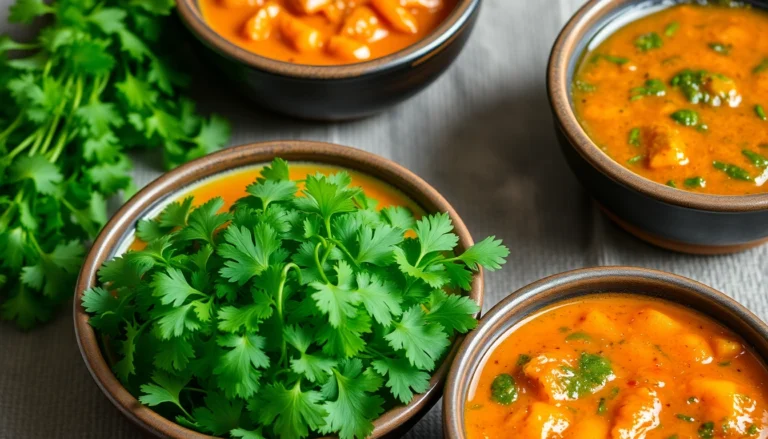Mastering the Art of Coriander Chutney: An In-Depth Guide to Excellence
In the vibrant world of Indian cuisine, chutneys serve as essential condiments that elevate the flavor profile of countless dishes. Among these, Coriander Chutney stands out for its fresh, herbaceous aroma and versatility. For manufacturers, food entrepreneurs, and home cooks alike, understanding the nuances of crafting authentic coriander chutney is crucial to delivering that perfect blend of taste and tradition. This comprehensive guide delves into every aspect of coriander chutney—from ingredients and regional variations to making, serving, and marketing—ensuring you achieve consistency, quality, and consumer satisfaction.
Understanding Coriander Chutney: Ingredients and Variations
Core ingredients for authentic coriander chutney
The foundation of any great coriander chutney lies in its freshness and balance. The primary ingredient is, of course, fresh coriander leaves (cilantro), which impart a vibrant green color and a distinctive herbal aroma. To enhance flavor complexity, ingredients like green chilies, grated coconut, raw mango, or tamarind are frequently incorporated, depending on regional taste preferences. Spices such as cumin, black salt, and coriander seeds add depth and warmth. When sourcing ingredients, it’s imperative to use fresh, high-quality produce. Certified organic coriander and fresh herbs from reputable suppliers ensure the chutney’s color vibrancy and flavor integrity.
Popular regional variations and flavor twists
Indian cuisine offers diverse regional interpretations of coriander chutney, each with unique flavor profiles. In Gujarat, coriander chutney often features a tangy twist with tamarind and jaggery, offering a balanced sweet and sour taste ideal for snacks like dhokla or fafda. In South India, coconut is a common addition, giving a creamy texture that pairs well with dosas and idlis. Rajasthani variants include roasted cumin and dried red chilies, lending a smoky flavor. North Indian versions tend to be milder, accentuating coriander and fresh green chilies, served as a raita accompaniment. Innovators are experimenting with incorporating mint, coriander root, or roasted garlic to create distinctive flavor profiles catering to modern palates.
Proper sourcing of fresh coriander and spices
Quality control begins with sourcing ingredients from reliable suppliers who practice sustainable and certified organic farming. For coriander, selecting fresh, aromatic leaves and stems is vital. Dried spices should be free from contaminants and stored in airtight containers to preserve potency. Engaging with certified organic vendors helps ensure food safety standards and appeals to health-conscious consumers. For businesses, establishing direct relationships with farmers or trusted exporters can streamline procurement, reduce costs, and guarantee consistent ingredient quality, which ultimately reflects in the flavor and branding of your coriander chutney.
Step-by-Step Guide to Making Perfect Coriander Chutney
Preparing and blending the coriander and spices
Begin by washing the coriander thoroughly to remove dirt and impurities. Drain excess water and chop roughly. Next, gather your fresh green chilies, ginger, garlic (if using), and any regional flavor enhancers like tamarind or dried red chilies. For an authentic taste, blend the coriander with green chilies, spices, and aromatics in a high-quality grinder or blender. Adding a splash of water or oil helps achieve a smooth consistency. Remember, proportioning ingredients carefully—such as 1 cup coriander, 2-3 green chilies, and 1 teaspoon cumin—ensures a balanced flavor profile. Adjust the spice levels according to target consumer preferences.
Achieving the ideal texture and consistency
Consistency varies based on usage—some prefer chunky chutneys for a textured bite, while others favor smooth blends for dipping or spreading. For a smooth paste, use a powerful blender and blend until you achieve the desired velvety texture. To retain freshness, do not over-blend, and consider adding a tablespoon of lemon juice or vinegar for preservation and brightness. Consistency can also be fine-tuned by gradually adding water or oil during blending. For commercial production, investing in industrial food processors ensures uniformity, hygiene, and scalability.
Storage tips to maintain freshness and flavor
Fresh coriander chutney should be stored in airtight, sterilized containers to prevent oxidation and microbial growth. Keep the chutney refrigerated at temperatures between 2-4°C for up to a week. For extended shelf life, natural preservatives like lemon juice or a mild antioxidant can be added. Commercially, vacuum packaging or nitrogen flushing extends shelf life further, ideal for export and retail. Label your products with manufacturing and expiry dates, and ensure hygienic handling to maintain product integrity during distribution.
Serving Suggestions and Pairing with Indian Dishes
Best foods and snacks to complement coriander chutney
Coriander chutney is a versatile accompaniment that pairs beautifully with snacks like samosas, pakoras, vada, and chaat. It enhances the flavor profile of grilled kebabs, sandwiches, and wraps. In South Indian cuisine, it complements dosa, uttapam, and idli. Pairing with staple dishes like chapati, paratha, and poha also elevates their taste. For healthier options, serve alongside fresh vegetable sticks or as a dip for baked snacks, making it suitable for both traditional and modern presentations.
Creative presentation and serving ideas
Innovate by serving coriander chutney in small earthenware bowls garnished with fresh coriander leaves or a drizzle of olive oil. Use mini cups or shot glasses for party platters, allowing guests to sample different chutneys. Combine with other condiments like yogurt or tangy tamarind chutney for layered flavors. Create colorful platters for festivals or markets to attract attention, emphasizing the chutney’s vibrant green hue and fresh aroma. For retail packaging, include serving suggestions and recipe ideas to inspire consumers.
Low-fat and healthy adaptations for all diets
For health-conscious consumers, reduce oil content and avoid deep-frying ingredients. Incorporate alternative preservatives like lemon juice and natural antioxidants to prolong shelf life without artificial additives. Using less salt and opting for Himalayan pink salt or organic herbs caters to ketogenic, paleo, or low-sodium diets. Vegan and gluten-free variants are straightforward, relying solely on plant-based ingredients and natural seasonings, ensuring inclusivity for diverse dietary needs.
Benefits of Homemade Coriander Chutney for Your Health
Rich antioxidants and digestive benefits
Coriander leaves are abundant in antioxidants that combat oxidative stress, thereby reducing the risk of chronic diseases. The herb also possesses digestive properties, helping to alleviate indigestion and bloating. Ingredients like raw mango or tamarind add natural acidity, stimulating saliva production and aiding digestion. Incorporating homemade coriander chutney into your diet can boost immunity and provide essential micronutrients like Vitamin C, Vitamin K, and dietary fiber.
Comparison with store-bought options
Homemade chutney offers better control over ingredients, avoiding preservatives, artificial colors, and excessive salt often found in commercial variants. Freshly prepared chutney retains more nutrients, flavor, and aroma, ensuring superior quality. Batch preparation allows customization to taste and dietary preferences, while commercial variants prioritize shelf life, often sacrificing some freshness. For brands like Spice Nest, highlighting these advantages helps build trust and customer loyalty in a competitive marketplace.
Incorporating into a balanced diet
Use coriander chutney as a condiment in balanced meals—pair with whole grains, lean proteins, and fresh vegetables. Its low-calorie yet flavor-rich profile encourages healthy snacking and meal enhancements. As part of meal prep, it can replace high-calorie sauces, contributing to weight management and overall wellness. Educate consumers on portion control and pairing ideas to maximize health benefits.
Marketing and Branding Coriander Chutney in Your Business
Packaging ideas to attract customers
Visual appeal is critical. Use eco-friendly, attractive jars or pouches with clear labeling that highlights the freshness and natural ingredients. Incorporate vibrant green imagery and traditional motifs to evoke authenticity and entice consumers. Include educational labels about health benefits, usage tips, and suggested pairing recipes. For export, ensure compliance with international packaging standards, providing multilingual labels and nutritional information to appeal to global markets.
Effective online and offline marketing strategies
Leverage social media platforms to showcase product videos, recipes, and customer testimonials. Collaborate with food bloggers and influencers to increase visibility. Offline, participate in culinary events, food festivals, and exhibitions such as Biofach or FICCI Food and Grocery Show to establish B2B relationships. Offer tasting sessions, demo classes, and promotional discounts. Building a strong brand story around traditional recipes, quality sourcing, and health benefits differentiates your product in the crowded market.
Leveraging trade shows and food expos for exposure
Trade shows provide unparalleled opportunities to present your coriander chutney to a targeted audience, including wholesalers, retailers, and institutional buyers. Prepare eye-catching booth displays, sample tastings, and detailed product literature. Highlight certifications, awards, and sustainability initiatives to build trust. Demonstrate versatility through live cooking or pairing sessions, showcasing applications across cuisines. Post-event follow-ups and digital campaigns can sustain the momentum gained from these exhibitions, turning leads into loyal customers.
